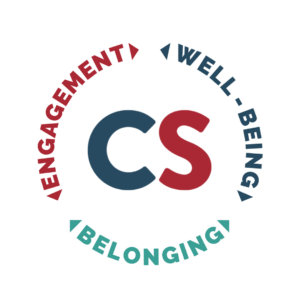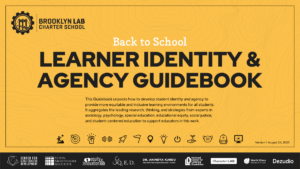Tips for Successfully Implementing SEL

By: Kristen Kopczynski
Social and emotional learning (“SEL”) is a practice and a way of educating that is being incorporated into more and more schools. The Collaborative for Academic, Social and Emotion Learning (CASEL) defines SEL as “the process through which children and adults understand and manage emotions, set and achieve positive goals, feel and show empathy for others, establish and maintain positive relationships, and make responsible decisions.” In other words, it is a type of learning in which students can gain knowledge and practice around real life skills that are outside of the usual content area classes. These skills are just as essential to be successful in higher education or the workforce so it seems natural to include them as part of the education of young people.
As educators, it is already a difficult balance to cover the content and prepare for state tests, but preparing our students for life after high school, whatever route they choose to take, is about more than whether or not they know the facts of history or how to balance an equation. Students need to know how to cope with stress, how to diffuse anger, and how to make a good first impression. They need to know how to find their identity and set goals for the future. Having a dedicated SEL program in schools allows us to teach these skills. For example, here at the Urban Assembly School of Business for Young Women, we build in two days of direct instruction, one day of academic check ins and one day of restorative circles to directly develop students’ SEL skills.
Here are some things schools and teachers can do to make sure their SEL programs are effective:
Allow Time to Practice
SEL topics can be introduced through direct instruction of important ideas and skills such as managing your emotions, understanding mindset, and collaborating with others; however, providing opportunities for students to practice and apply these skills is essential for making them relevant and accessible to their daily lives. Practicing and applying these skills might involve role-playing activities, extension projects, or even just keeping the language around the concepts alive and in use in the classroom. Teaching SEL skills without providing opportunities for practice and application is like introducing a concept once in class and then putting it on the test without reviewing it or doing any practice problems.
Make SEL Instruction Relevant
There are SEL curricula out there to provide the foundation for a successful SEL program. The more relevant the curriculum is to the students, the more they will buy in to the ideas of SEL. As much as it is possible, curriculum should be modified to be relevant and applicable to the student population to which it is being taught. For instance, the types of examples that will resonate with students in urban areas may be different than those that would resonate with students in more rural settings. Teachers can also make the SEL practices more relevant and accessible to students by opening themselves up and sharing their own personal experiences. I remember the first time I opened up to my students about a situation I was facing where I had to apply the same SEL skill I was teaching them about — resolving conflict. My closest friend and I had a misunderstanding and just needed to talk it through to resolve it and get back on track. In the past, my students sometimes felt like the examples from our lessons didn’t resonate with them. Sharing my experiences helped my students share their own experiences, and these connections helped us all find relevance to these SEL skills across racial, cultural, and even generational differences.
Incorporate SEL Throughout the School
In an ideal world, SEL would live in some form in every classroom throughout the school and all teachers would be trained to be able to incorporate even small SEL practices or examples into their content area classes. With the demands on schools, such as standards, this is not so easily done. Class periods are short and there is specific material to be covered. There is limited time for staff training and development, and in most cases there is just not enough time in the day. Keeping some of the best practices in mind, teachers can try to provide opportunities for practice and application whenever possible.
One way of keeping SEL accessible and in practice throughout the school is through visibility of the core ideas in the hallways and in the classrooms. Having posters, word walls, and signage throughout all classrooms and in the hallways of the school with strategies and common language allows students to refer back and access the skills when needed. Another idea is to designate a bulletin board space to celebrate students that have shown either leadership or the most improvement around an SEL concept in a student of the month type program. For example, the month might have a theme around the core competency self-management with a focus on impulse control. One student from each grade level could be identified as a leader and another as most improved in this area for the month. These students are then celebrated with pictures on the wall, certificates, etc. Even little practices like this help to acknowledge the work the students are doing around SEL.
Use Data
The use of data can help inform SEL instruction and measure outcomes of SEL programs. Many schools use the DESSA (Devereux Student Strengths Assessment), a standardized, strengths-based assessment from Aperture Education that measures the social and emotional competence of students as rated by an adult at the school (teacher, social worker, etc.). The DESSA allows students to have a better understanding of their strengths and areas where they need to grow. Schools can also make use of the DESSA data to provide students with targeted support. For example, small counseling groups could be formed based on students’ needs around a particular competency. The data could also be used to determine topics for discussion in restorative justice circles.
SEL in schools is such an important part of preparing our young people for what lies ahead. In whatever way possible while balancing all the demands, all schools should strive to incorporate SEL on any level that they can. Like anything, it has to evolve over time and fit with the personality of the school. Schools should take advantage of the SEL resources and curriculum out there, but also remember to make the program their own so it will really feel meaningful and relevant to the students.
For more, see:
- CASEL’s New Guide Provides Actionable Steps for SEL Implementation
- Social Emotional Learning and the Future of Education
- Infographic | Why It Is Imperative to Assess Social Emotional Learning
Kristen Kopczynski is a teacher at the Urban Assembly School of Business for Young Women in Manhattan.
Stay in-the-know with innovations in learning by signing up for the weekly Smart Update.







0 Comments
Leave a Comment
Your email address will not be published. All fields are required.